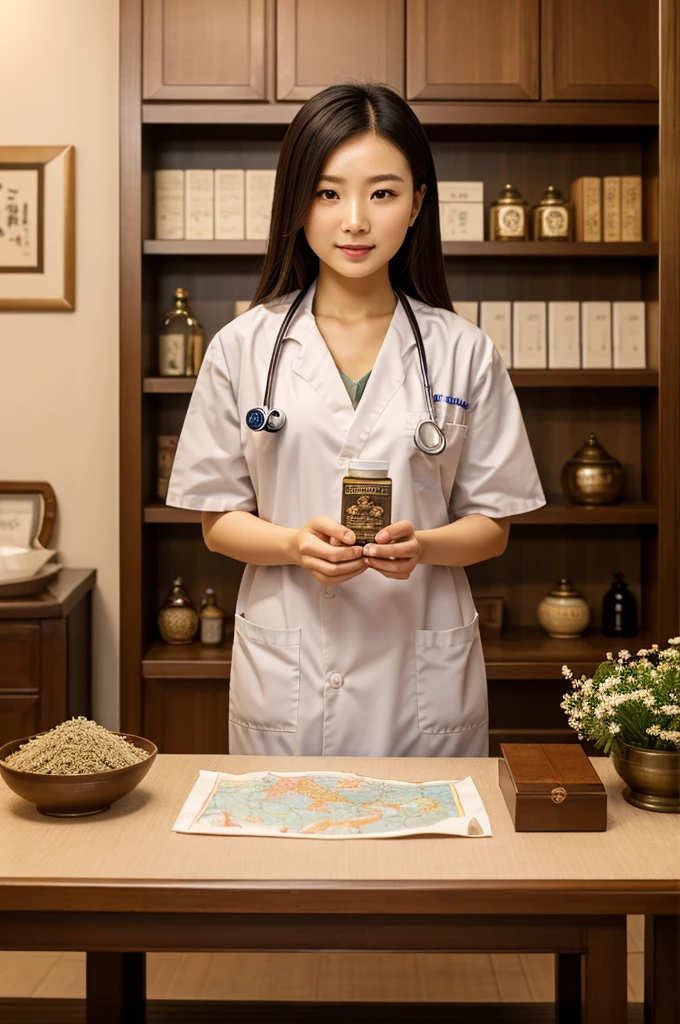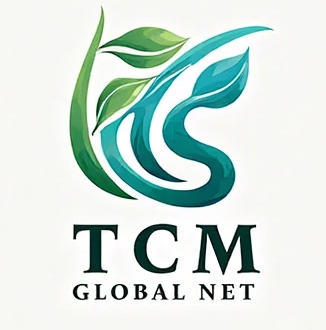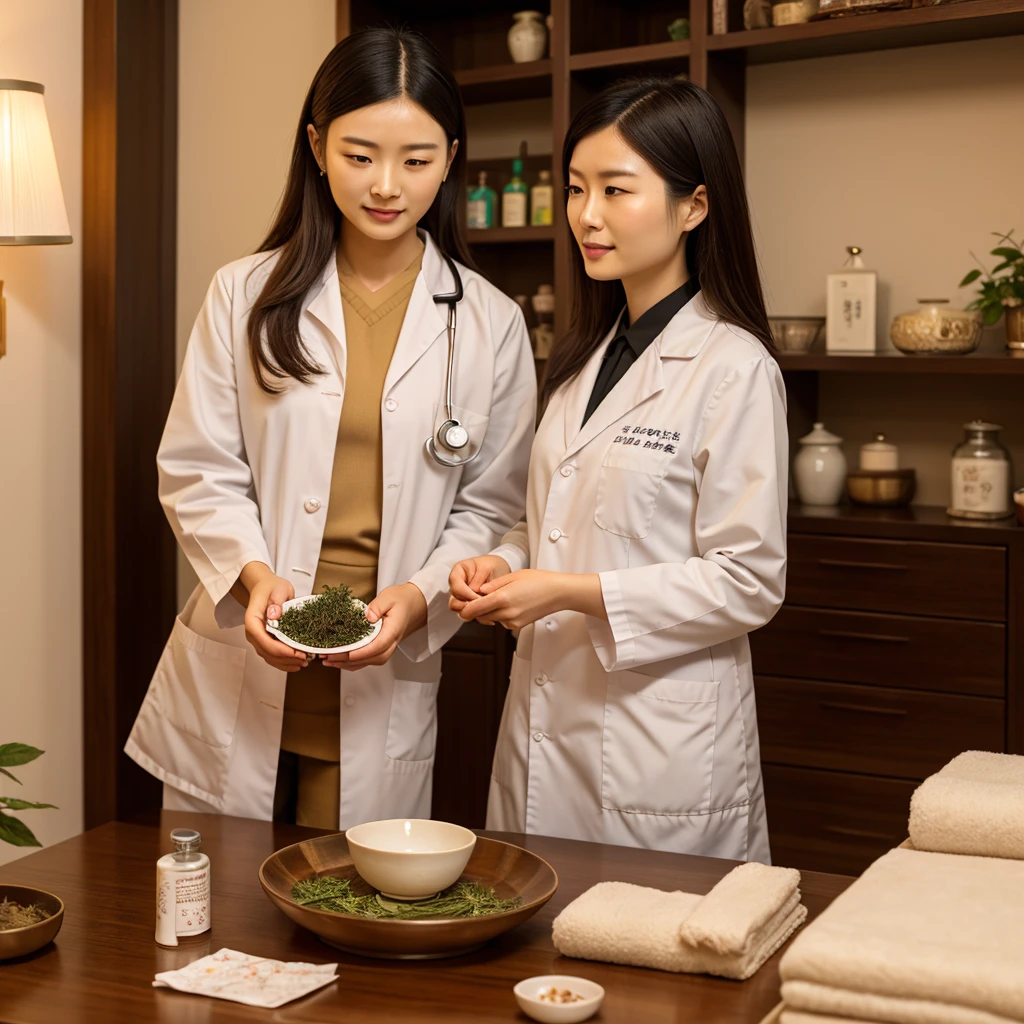According to the Yellow Emperor's Classic of Internal Medicine, "When a woman is 27 years old and the Heavenly Decadence arrives, the Ren Chakra is open, the Taichong Chakra is in full bloom, and the menstruation takes place in a timely manner, so she is able to have children." This means that a woman has her first menstruation around the age of 14, marking the maturity of the reproductive system. In modern society, there is a trend for many women to have earlier menstrual cycles. Some girls begin breast development and first menstruation at the age of 11-12, or even 9-10. This early onset of menstruation may not only bring about psychological stress, but may also have a negative impact on physical health. For example, early sexual development may lead to premature epiphyseal closure, affecting height growth.
Menstruation is a barometer of women's health, and the amount of menstruation directly reflects the health of women's bodies. However, many women often feel confused and anxious when facing the problem of scanty menstruation. This article will explore the definition, causes, conditioning methods, and daily health care preventive measures of scanty menstruation from the perspective of combining traditional Chinese and Western medicine, and combine actual cases to help everyone better understand and deal with this common problem.
I. Dual Interpretation of Chinese and Western Medicine for Low Menstrual Flow
1. Medical definitions and hazards
- normal standard: Modern medicine believes that a menstrual flow of more than 20 ml per period is normal, and less than 20 ml is a low menstrual flow. Generally speaking, according to the number of sanitary napkins used, for a normal medium-sized woman, a menstrual flow of 20 ml is about 4-5 sanitary napkins.A relatively normal menstrual flow should amount to about 30ml, or 5-7 tampons.20-60 ml (about 4-7 sanitary napkins) per menstrual period, <20 ml is considered abnormal (Obstetrics and Gynecology, 9th edition).
- Long-term hazards: Decreased endometrial tolerance → infertility risk ↑; deficiency of qi and blood → premature aging, immunity ↓.
2. Western core causes
| typology | typical performance | Inspection indicators | treatment method |
|---|---|---|---|
| Endocrine disorders | Polycystic ovary syndrome (PCOS), hypothyroidism | Androgens ↑, TSH ↑, ultrasound monitoring of follicles | Dayin-35, Eugenol + Ovulation Promoters |
| organic pathology of the uterus | Uterine adhesions (Asherman's syndrome) | Hysteroscopy, endothelial biopsy | Hysteroscopic surgery + estrogen sequential therapy |
| ovarian recession | FSH >40IU/L, AMH <1.1ng/ml | Sex Hormone Six, Anti-Müllerian Hormone | Hormone Replacement Therapy (HRT) |
3. Identification and typing in Chinese medicine
- Kidney qi deficiency type: Early menarche (<12 years old), pale menstruation, lumbar and knee pain and weakness → Right Angelica Pill plus subtractions.
- Liver Depression and Blood Stasis: Premenstrual breast distension and pain, purple and black menstrual blood with lumps → Free and Easy San combined with Tao Hong Si Wu Tang.
- Spleen deficiency and phlegm-dampness type: obesity, leucorrhoea, thick and greasy tongue → Cangshu Guiding Phlegm Pill + Ginseng and Atractylodis Macrocephalae.
4. Causes of low menstrual flow
①Endocrine disorders
- Polycystic ovary syndrome (PCOS):PCOS is one of the main causes of scanty menstruation. Its typical symptoms include reduced menstrual volume, prolonged menstrual cycles, and even amenorrhea. In addition, PCOS patients may also experience elevated androgen levels, leading to symptoms such as hirsutism and acne.
- Thyroid dysfunction: Hyperthyroidism or hypothyroidism will affect hormone secretion, which in turn affects menstrual volume.
- Hyperprolactinemia: Excessively high prolactin levels can inhibit ovulation and lead to reduced menstrual flow.
Common ones such as polycystic ovary syndrome (polycystic), thyroid dysfunction, hyperprolactinemia, etc., which can lead to hormonal problems and affect the growth of the uterine lining. Normally, a woman's uterine lining should be roughly 1 centimeter thick before she has her period. If the lining is not thick enough, or if the lining is thick but does not peel off, it can lead to low or irregular periods.
Problems with hormone production can affect the growth of the endometrium and prevent it from developing properly. Many people have ultrasounds and often focus on the lining of the uterus when they have an ultrasound.The thickness of the lining of the uterus determines the amount of menstrual flow and whether or not menstruation will occur normally.Before a woman has her period, the thickness of the uterine lining has to reach roughly one centimeter. Reaching this thickness is like a sponge soaking up water; the more water there is, the more water can be squeezed out, and the water here is equivalent to the amount of menstruation and blood.
When menstruation comes, the lining of the uterus thickens. With menstruation, the lining of the uterus peels off and begins to bleed, and the blood is slowly discharged from the body, and when menstruation is over, the lining gradually thins again. After that, the body automatically produces blood to replenish it and the lining gradually thickens again. This is how the menstrual flow is reflected in the examination.
②Endometrial problems
- Insufficient endometrial thickness:The endometrium is the "soil" for menstruation, and its thickness directly affects the amount of menstruation. Generally speaking, the thickness of the endometrium should reach about 1 cm to ensure normal menstrual volume.
- Endometrial non-exfoliation: Even if the endometrium is thick enough, if the endometrium is not shed, menstruation cannot be discharged normally, resulting in less menstrual flow.
③Organic changes in the uterus
- Uterine inflammation, adhesions, polyps:These organic changes will directly affect the function of the endometrium, leading to a decrease in menstrual volume. For example, women who have given birth or have undergone uterine curettage may have inflammation or adhesions in the uterus, which will affect the amount of menstruation.
- Therefore, many women see a small amount of menstruation is considered to be blood deficiency and blood tonic, in most cases there is some truth, but the premise is to rule out the existence of inflammation of the uterus, adhesions, polyps and other organic changes in the case of the uterus.

Case Study
Ms. Li, 32 years old, came to see a doctor because of scanty menstruation. B-ultrasound examination showed that the thickness of the endometrium was insufficient, only 0.5 cm. Combined with other examination results, it was diagnosed as scanty menstruation caused by endocrine disorders. After three months of hormone treatment and Chinese medicine conditioning, Ms. Li's menstrual flow returned to normal.
II. Combined Chinese and Western medicine conditioning program
(Integration of search results with clinical pathways)
1. Phased intervention strategies
| point | Western medicine focus | collaborative effort of Chinese medicine | Treatment Goals |
|---|---|---|---|
| Acute conditioning period (1-3 months) | Hormonal regulation (e.g., metformin for PCOS) | Gui Zhi Fu Ling Pill to dispel blood stasis and generate new blood. | Inner membrane thickness ≥8mm |
| Consolidation period (April-June) | Monitoring ovulation (basal body temperature method) | Gui Shen Tang to replenish qi and blood + moxibustion at Guan Yuan point | Regular menstrual cycle (±3 days) |
| Maintenance period (>6 months) | Lifestyle interventions | Ba Zhen Yi Mother Pill + Ear Point Pressure Bean (Endocrine Point) | Prevention of recurrence |
2. Specialized external treatments
- Chinese herbal enema formula: 30g of red vine + 20g of septoria + 15g of sanlang, retained enema at bedtime (damp-heat stasis type).
- burying of buried wires at acupuncture points: Take the Uterus, Sanyinjiao, and Foot Sanli points, once a month, to regulate the Chongren and Ren channels.
3. Perceptions of low menstrual flow in the context of Chinese medicine
1. According to traditional Chinese medicine (TCM), menstruation is closely related to kidney qi, tianjie, and the Chongren chakra.
1) Kidney qi (heavenly decadence) is the source:
The Kidney Qi is sufficient for the Heavenly Decadence to function properly.Early or late menstruation, to a certain extent, reflects the situation of the kidney qi, premature menstruation is mostly early loss of kidney qi, but there are also kidney qi full and normal menstruation gifted people.
First of all, there is the source, i.e., tian gui. Heavenly Decay is actually a reflection of the adequacy of Kidney Qi, which is sufficient for Heavenly Decay to function properly.
This is typified by the early and late onset of menstruation, with some people coming early and others coming late. According to my observation, most of the people who have early menstruation do so because they have damaged their body's kidney energy by depleting and catalyzing it in advance. Therefore, I believe that early menstruation is not a good thing.
Of course, there are special cases, some people with extremely abundant kidney qi, even if the menstruation is early, it will not be early menopause, and from the beginning to the end of the menstrual flow is relatively sufficient, this kind of people belong to the gifted. Kidney energy is like a faucet switch, only when kidney energy is sufficient, menstruation will come normally.
2) The Ren Chakra passes and the Tai Chong Chakra flourishes as channels:
The Ren Chakra and Tai Chong Chakra are like water pipes and rivers, which should be smooth and solid. If there is a problem with the channel, it can lead to bleeding during menstruation, bleeding during ovulation, or early or delayed menstruation.
Secondly, the Ren Chakra is clear and the Tai Chong Chakra is abundant, which is like a water pipe and a river; the river should be clear and firm so that the menstruation will not be abnormal. This is because some women will experience bleeding even when they are not menstruating, i.e. non-menstrual bleeding, and some will bleed during ovulation. This is because the passage may be blocked or leaking, resulting in abnormal menstrual flow. In addition to abnormal menstrual flow, there will also be early or late menstruation, all of which are related to channel problems.
TCM practitioners look at problems in a more holistic way, analyzing them not by focusing on a single factor, but by looking at them in a comprehensive and interrelated manner.
3) Emotional impact:
Emotions have a big impact on menstruationWhen you are in a good mood, your menstrual breasts may not hurt, but when you are in a bad mood, not only do you have breast pain and menstrual cramps in your abdomen, but your menstrual flow may also become less, have blood clots, or become darker in color. Women are born with the liver, so it is important to nourish the liver and blood.Avoid staying up lateBecause staying up late hurts the liver, it can make the skin deteriorate and age faster.
4. Common clinical types of low menstrual flow in Chinese medicine and ways to regulate them
①Qi and blood deficiency
- symptom:The menstrual flow is small, light in color, and bloodless. The patient is usually short of breath, lazy to speak, and easily tired.
- Preparation method: Take Bazhen Pills, Shiquan Dabu Pills, or stew more Siwu Soup (you can add Astragalus to replenish Qi) to replenish Qi and blood.
②Types of liver and kidney deficiency
- symptom:It often occurs in women over 40 years old who are approaching perimenopause or menopause. Symptoms include hot flashes, sweating, soreness in the waist and knees, etc.
- Preparation method: Take Liuwei Dihuang Pills, Zuogui Pills, etc. to nourish the liver and kidneys.
③Types of Qi stagnation and blood stasis
- symptom: The menstrual volume is small, dark in color, purple-black and contains blood clots. If it is not smooth, it will be painful, and there will be bloating or tingling.
- Preparation method:The key to TCM pain treatment is to change the pressure imbalance in the painful area. It is recommended to seek treatment from a professional physician.
Case Study
Ms. Wang, 45 years old, was approaching menopause. Her menstrual volume gradually decreased, accompanied by symptoms such as soreness of waist and knees, hot sweats, etc. She was diagnosed with liver and kidney deficiency type of scanty menstruation. She was given Liuwei Dihuang Pills and Zuogui Pills for conditioning. After three months, her menstrual volume increased and other symptoms were relieved.
Third, modern women must know the law of menstrual care
(combining search results with lifestyle medicine)
1. List of dietary taboos
- ❌ Avoid cold: ice cream, chilled drinks → cold congeals blood stasis.
- ❌ Avoid sweetness and greasiness: cakes, milk tea → promotes phlegm-dampness.
- ✅ Warm tonic is recommended: Angelica Ginger Lamb Soup (once a week), Black Sesame Walnut Paste (tonifying the kidneys and filling the essence).
2. Exercise prescription
- "To regulate the spleen and stomach, we must lift it alone.": Exercise for 10 minutes daily in the morning to elevate Spleen Yang.
- Kegel exercises: Strengthens pelvic floor muscle groups and improves pelvic blood circulation (suitable for postpartum women).
- From time to time, tap the elbow, armpit, popliteal, and groin areas.

3. Emotional management techniques
- Liver Relief Tea5g of rosehips + 3g of tangerine peel + 3g of green calyx plums, brewed with boiling water to drink as tea.
- Positive Thought Meditation: 15 minutes a day to lower cortisol levels (which studies have shown to improve menstrual headaches).
IV. Analysis of typical cases
Case 1: Amenorrhea secondary to PCOS
- patient: 28 years old, 6 months of amenorrhea, BMI 28.5, hirsute.
- a doctor trained in Western medicine: Daring-35 x 3 months, testosterone decreased to normal.
- a doctor trained in Chinese medicine: Metformin + Cang Fu Guiding Phlegm Pills x 3 months, with acupuncture at Sanyinjiao and Fenglong points.
- in the end: Regularity of menstruation was restored and a successful natural pregnancy was achieved.
Case 2: Postpartum uterine adhesions
- patient: 32 yrs old with reduced menstrual flow 80% after abortion and cyclic abdominal pain.
- a doctor trained in Western medicine: Hysteroscopic separation of adhesions + balloon stent.
- a doctor trained in Chinese medicine: Estrogen sequential therapy + Ba Zhen Tang orally and moxibustion at uterine points.
- in the end: Endothelial thickness increased from 4mm to 9mm and menstrual flow returned to normal 80%.
IV. Daily health care and prevention of scanty menstruation
1. Maintain a healthy lifestyle
- Work and rest routine: Try to maintain a regular schedule and avoid staying up late.
- Eat a balanced diet: Eat more foods rich in protein, vitamins and minerals, such as fresh vegetables and fruits, high-quality protein, etc.
2. Pay attention to emotional regulation
- Emotional Management: Keeping emotions in your heart is harmful and useless, you should vent your emotions appropriately. You can try to relieve stress through exercise, meditation, etc.
- Positive attitude:Maintaining a positive and optimistic attitude is conducive to physical health.
3. Drug health care
- Liver Qi Stagnation: You can take Xiaoyao Pills or Jiawei Xiaoyao Pills.
- People with weak blood: You can take Shiquan Dabu Pills, Bazhen Pills, Bazhen Yimu Pills, etc.
- Liver and kidney deficiency: You can take Liuwei Dihuang Pills, Zuogui Pills, etc.
4. Sports and health care
- Moderate exercise: Women can perform Tai Chi, yoga and other exercises appropriately, and can also tap the elbows, armpits, popliteal fossa, groin and other parts from time to time to promote blood circulation.
5.Food Comparison Table::
| typology | Recommended Meals | food that is contraindicated |
|---|---|---|
| Qi and blood deficiency | Lamb Soup with Angelica and Ginger | Ice cream, cold drinks |
| Liver Depression and Blood Stasis | Rose Hip Tea | Milk tea, dessert |
V、Summarize
Low menstrual volume is a common health problem for women. Through the combination of Chinese and Western medicine, we can have a more comprehensive understanding of its causes and take corresponding conditioning measures. Whether it is organic changes or functional changes, the problem can be solved through scientific examinations and personalized treatment plans. I hope this article can provide a useful reference for the majority of female friends and help them better deal with the problem of low menstrual volume.


Leave a Reply